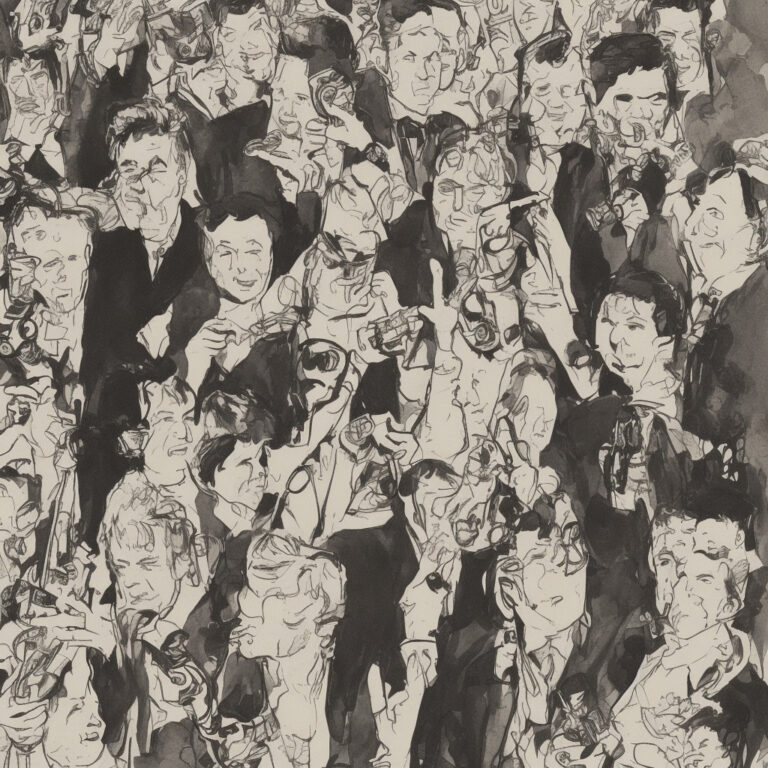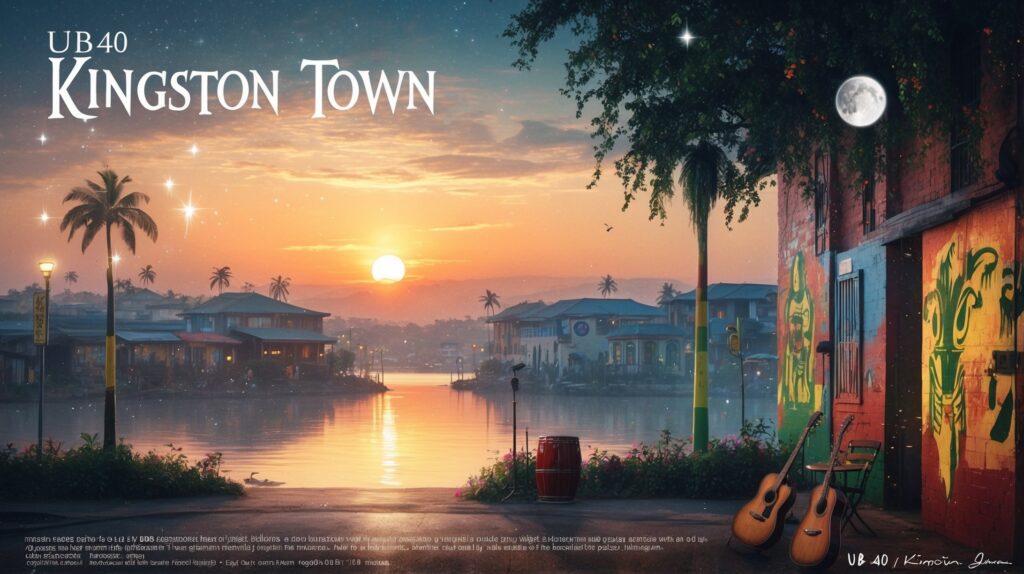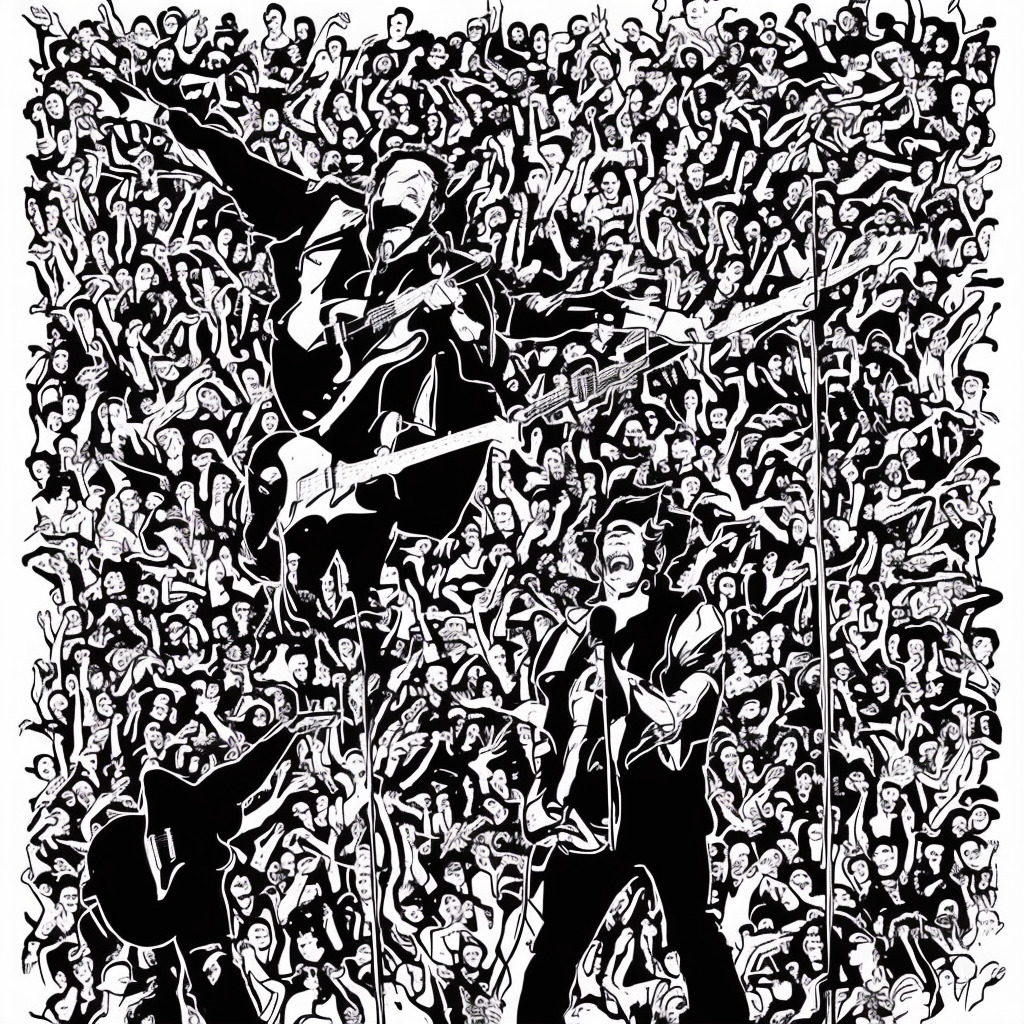? Did you know “This Charming Man” was recorded in just one day? It’s true! The Smiths’ timeless jangle-pop gem still charms us 38 years later. ? #TheSmiths #ThisCharmingMan #MusicTrivia #ThrowbackThursday ? Read about it: tinyurl.com/4j65ssns
A Charming Dive into Indie Royalty
Dive into indie royalty with The Smiths’ timeless classic, “This Charming Man,” a poetic blend of jangle-pop soundscapes and introspective storytelling that continues to shape modern music.

The Smiths, an iconic British indie rock band, remains a powerhouse of the ’80s music scene, years after their 1987 disbandment. Often hailed for their introspective lyricism, catchy tunes, and distinct sound, the band’s timeless appeal is undeniable. At the heart of it all is their 1983 hit single “This Charming Man,” a song that sits comfortably among the band’s most illustrious works.
Formed in 1982 by the remarkable duo of Morrissey and Johnny Marr, The Smiths quickly made their mark on the UK music scene. Morrissey’s poetic lyrics and unique vocal style, coupled with Marr’s innovative guitar work, catapulted the band to new heights. Bassist Andy Rourke and drummer Mike Joyce completed the lineup, further solidifying the band’s signature sound.
“This Charming Man” exemplifies the best of what The Smiths have to offer. With its infectious jangle-pop sound and Morrissey’s poignant, ambiguous storytelling, the track is a bittersweet foray into themes of class, sexuality, and human connection. Johnny Marr’s shimmering guitar work is particularly noteworthy, as it interweaves with Morrissey’s vocals to create a sonic landscape that transports listeners to another time and place.
However, it would be remiss not to address the controversies that have surrounded the band, particularly Morrissey’s public persona. His outspokenness on political and social issues has, at times, left fans divided. As an experienced music blogger, it’s essential to acknowledge these challenges, even as we appreciate the music itself.
Throughout their career, The Smiths garnered critical acclaim and commercial success. Although they never won any major awards, their influence on the indie rock scene is immeasurable. Bands like Oasis, Radiohead, and The Stone Roses all cite The Smiths as a significant inspiration, and their music continues to resonate with fans old and new. The Smiths were even inducted into the Rock and Roll Hall of Fame’s “500 Songs That Shaped Rock and Roll,” further cementing their legacy.
In conclusion, while “This Charming Man” is just one example of The Smiths’ storied discography, it serves as a testament to their enduring impact on the music world. As an experienced music blogger, it’s a privilege to dive into the rich history of such an influential band, and one can only hope that their music will continue to charm new generations.
Charting the Journey of an Iconic Tune
From humble beginnings to 80s alternative rock classic, “This Charming Man” charts an iconic journey with its captivating riffs, distinct vocals, and a cult following that transcends generations.

Diving into the chart success of “This Charming Man,” it’s important to note that the song was released on October 31, 1983, as the second single from The Smiths’ self-titled debut album. Despite not being an instant hit, the song gradually gained traction and went on to become one of the band’s most recognizable and beloved tracks.
Initially, “This Charming Man” entered the UK Singles Chart at position No. 38 during its first week of release. Though it didn’t climb much higher during its initial run, peaking at No. 25 on November 19, 1983, the song’s enigmatic guitar riff and Morrissey’s distinct vocals caught the attention of both fans and critics alike. In fact, “This Charming Man” spent a total of 11 weeks on the chart, proving its staying power and hinting at the cult following The Smiths would eventually amass.
Interestingly, the song saw renewed chart success when it was re-released in 1992 after the band’s breakup. This time, it reached an impressive No. 8 on the UK Singles Chart, further solidifying its status as a classic of the 80s alternative rock scene.
Additionally, “This Charming Man” garnered acclaim beyond the UK as well. In the United States, the track peaked at No. 15 on the Billboard Dance Club Songs chart in 1984, showcasing its appeal to a wider audience.
As for chart trivia, the song’s unique guitar sound can be partially attributed to the fact that Johnny Marr, the band’s guitarist, used a 1965 Rickenbacker 330-12 Fireglo to record “This Charming Man.” This particular guitar model is known for its jangly, chiming tone, which is now synonymous with The Smiths’ sound.
In conclusion, while “This Charming Man” didn’t initially dominate the charts upon its release, its enduring popularity and subsequent chart success in later years is a testament to its iconic status within The Smiths’ discography and the music world at large.
Delving into the Lyrics: A Charming Insight
Punctured bicycle
On a hillside desolate
Will Nature make a man of me yet?
When in this charming car
This charming man
Why pamper life’s complexity
When the leather runs smooth
On the passenger seat?
I would go out tonight
But I haven’t got a stitch to wear
This man said “It’s gruesome
That someone so handsome should care”
Na, na-na, na-na, na-na, this charming man
Na, na-na, na-na, na-na, this charming man
I would go out tonight
But I haven’t got a stitch to wear
This man said “It’s gruesome
That someone so handsome should care”
This charming man
This charming man
A jumped-up pantry boy
Who never knew his place
He said “Return the ring”
He knows so much about these things
He knows so much about these things
He knows so much about these things
As one of the most famous and well-loved songs by The Smiths, “This Charming Man” not only showcases their distinctive sound but also offers a profound and poetic insight into the era’s social and political climate. The lyrics, penned by the brilliant Morrissey, exude a sense of yearning and vulnerability, mirroring the struggles faced by many during the tumultuous times of the 1980s.
The opening line, “Punctured bicycle on a hillside desolate,” paints a picture of isolation and despair while simultaneously questioning the role of nature in shaping one’s identity with “Will Nature make a man of me yet?” This line can be interpreted as a critique of societal expectations on masculinity and the concept of self-discovery.
The chorus lines, “I would go out tonight, but I haven’t got a stitch to wear, this man said ‘It’s gruesome that someone so handsome should care,'” reflect the protagonist’s feelings of inadequacy and self-doubt. The song can also be viewed as a commentary on the superficiality and materialism associated with the 1980s, as well as an exploration of the complex nature of relationships.
Furthermore, the repeated mention of “This charming man” acts as a reminder that appearances can be deceiving, and the term “charming” may not always equate to genuine or sincere. The lyrics also touch on themes of social hierarchy and the notion of “knowing one’s place,” as seen in the lines “A jumped-up pantry boy who never knew his place, he said ‘Return the ring,’ he knows so much about these things.”
Ultimately, “This Charming Man” serves as a timeless, poetic masterpiece, capturing the essence of a generation fraught with self-doubt, societal pressures, and a longing for identity and belonging. In its exploration of themes that remain relevant today, it’s no wonder that this song has stood the test of time and remains an iconic piece of The Smiths’ discography.
A Visual Journey with “This Charming Man”
One liner: “This Charming Man” thrives visually through fan-made content and live performances, capturing the essence of The Smiths’ nostalgic appeal and showcasing their musical prowess.
While The Smiths’ iconic song “This Charming Man” never had an official music video, that hasn’t stopped fans from creating their own visual interpretations of the single. The absence of an official video has given rise to a diverse range of fan-made content, from simple lyric videos to detailed visual narratives that capture the essence of the track.
One notable fan-made music video, directed by YouTube user The Reelist, utilizes scenes from the 1961 film “A Taste of Honey” to visually represent the lyrical content of “This Charming Man.” The Reelist’s choice of using a black-and-white film aligns perfectly with the vintage aesthetic of The Smiths, and the scenes selected convey the emotions of the song in a way that feels both nostalgic and timeless.
The YouTube tributes also extend beyond fan-made music videos, as several content creators have dissected various elements of “This Charming Man,” from the song’s unique guitar riff to the impact of the lyrics on popular culture. Guitar enthusiasts can find tutorials that break down Johnny Marr’s intricate picking pattern, while literature aficionados can watch video essays discussing Morrissey’s literary influences on the lyrics.
Another interesting aspect of the visual legacy of “This Charming Man” is its presence on various live performance videos. The Smiths’ energetic live renditions of the track have been immortalized in several professionally recorded concerts and TV appearances, such as their 1983 performance on the UK’s “Top of the Pops.” These live videos not only showcase The Smiths’ musical prowess but also offer a glimpse into the band’s stage presence and the fan frenzy they generated.
In lieu of an official music video, the fan-made content and live performances have collectively contributed to the song’s visual identity. The passion and creativity of The Smiths’ fanbase have ensured that “This Charming Man” continues to have a strong visual presence that complements the song’s enduring appeal.
The Maestro Behind the Melodies: Johnny Marr
Johnny Marr, the prolific composer of “This Charming Man,” is the driving force behind The Smiths’ distinctive sound. A true virtuoso, Marr’s guitar work is a harmonious blend of jangle pop and indie rock that has left an indelible mark on music history. In addition to “This Charming Man,” Marr is responsible for a myriad of other notable compositions within The Smiths’ discography. Take, for instance, the hauntingly beautiful “How Soon Is Now?” – a track that showcases Marr’s innovative riff-making and atmospheric soundscapes. Another standout piece is “There Is A Light That Never Goes Out,” which couples Marr’s delicate fingerpicking with an emotive string arrangement, resulting in a timeless ballad that continues to resonate with fans worldwide. With his undeniable talent, Johnny Marr has not only cemented his status as one of the most influential composers of the 80s but has also enriched the musical landscape for generations to come.
Awards, Accolades, and Adaptations
An alternative rock classic, “This Charming Man” continues to charm generations with its captivating melody, memorable riffs, and influence on musicians worldwide.

Since its release in 1983, “This Charming Man” has garnered numerous accolades and recognitions, solidifying its status as a classic in alternative rock history. In 2004, Rolling Stone ranked the song at number 97 in their list of “The 500 Greatest Songs of All Time.” NME also praised the track, ranking it at number 2 in their “100 Greatest Songs of the 1980s” list in 2012, and BBC Radio 2 even included it in their “Top 100 Greatest Guitar Riffs” list in 2014.
The song’s enduring appeal has led to its inclusion in various movie, TV, and video game soundtracks. Notably, “This Charming Man” was featured in the 1996 film “The Queen is Dead: A Film About The Smiths” and the 2004 film “A Home at the End of the World”. Television audiences have heard the iconic song in shows like the British series “Blackpool” (2004) and the US series “Sex and the City” (2003).
In the gaming world, “This Charming Man” made an appearance in the highly popular “Rock Band” video game series as downloadable content. This allowed gamers to play along to the song and appreciate its catchy guitar riffs and memorable basslines.
Numerous artists have been inspired to perform cover versions of “This Charming Man” over the years, showcasing the song’s enduring influence on contemporary musicians. Some of the more notable covers include Death Cab for Cutie’s indie rock rendition, Franz Ferdinand’s live performance at the NME Awards in 2005, and Starsailor’s acoustic take on the song. Other musicians such as The Divine Comedy, The Courteeners, and David McAlmont have also paid tribute to The Smiths by covering this iconic track.
The rich legacy of “This Charming Man” speaks volumes about its impact on the music world. Its catchy melody and thoughtful lyrics continue to captivate listeners, musicians, and critics alike, making it a timeless gem in the history of alternative rock.
Delving into the Musical Anatomy
Venturing into the technical aspects of “This Charming Man,” it becomes apparent just how meticulously The Smiths constructed this iconic song. The track is written in the key of F♯ major, a key generally known for its bright and lively tonality, which perfectly complements the song’s upbeat tempo of around 120 beats per minute.
The song begins with an instantly recognizable guitar riff, which showcases Johnny Marr’s exceptional skills as a guitarist. Marr employs a style called “jangle pop,” characterized by the use of arpeggiated chords played on a clean electric guitar. “This Charming Man” is a prime example of this genre. The guitar work is intricate, yet accessible, and has since become one of the defining features of the track.
Marr’s guitar is supported by a steady rhythm section composed of Andy Rourke on bass and Mike Joyce on drums. The bass line, while not overly complex, provides a solid foundation for the song, further driving its infectious groove. Rourke’s bass playing is distinguished by its melodic nature and the use of syncopated rhythms, which gives the song an added layer of depth.
As for the drums, Mike Joyce’s performance is characterized by its tasteful simplicity. The drum pattern is primarily composed of hi-hat, snare, and bass drum hits, with occasional tom fills that add a sense of dynamism to the arrangement. The steady 4/4 time signature provides a reliable backbone for the other instruments to build upon.
Throughout the song, the chord progression revolves around the I-IV-V (F♯-B-C♯) structure, with occasional vi (D♯m) and ii (G♯m) chords thrown in for variety. This simple yet effective progression adds to the song’s catchiness and accessibility, making it a staple for guitarists and music enthusiasts alike.
The vocal melody, delivered by the enigmatic Morrissey, is undeniably catchy and features his signature crooning style. The lyrics are cryptic yet intriguing, leaving the listener to ponder their meaning long after the song has ended. Morrissey’s unique vocal delivery adds another layer of depth to the song’s already rich musical tapestry.
In conclusion, “This Charming Man” is a shining example of The Smiths’ ability to create a song that is both musically engaging and appealing to a wide audience. The combination of Marr’s jangle pop guitar work, Rourke’s melodic bass lines, Joyce’s steady drumming, and Morrissey’s distinctive vocals all contribute to the song’s enduring success and widespread appeal.







